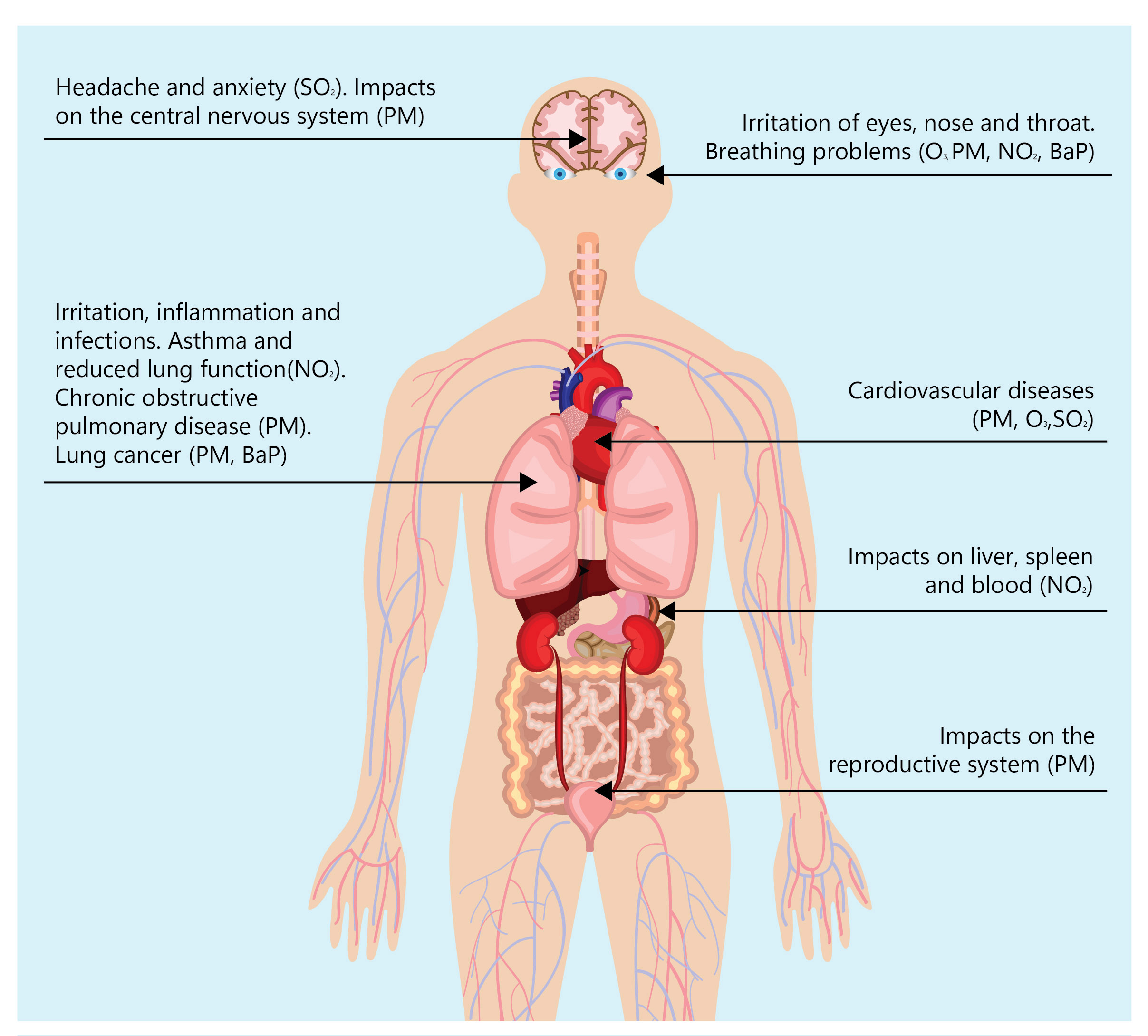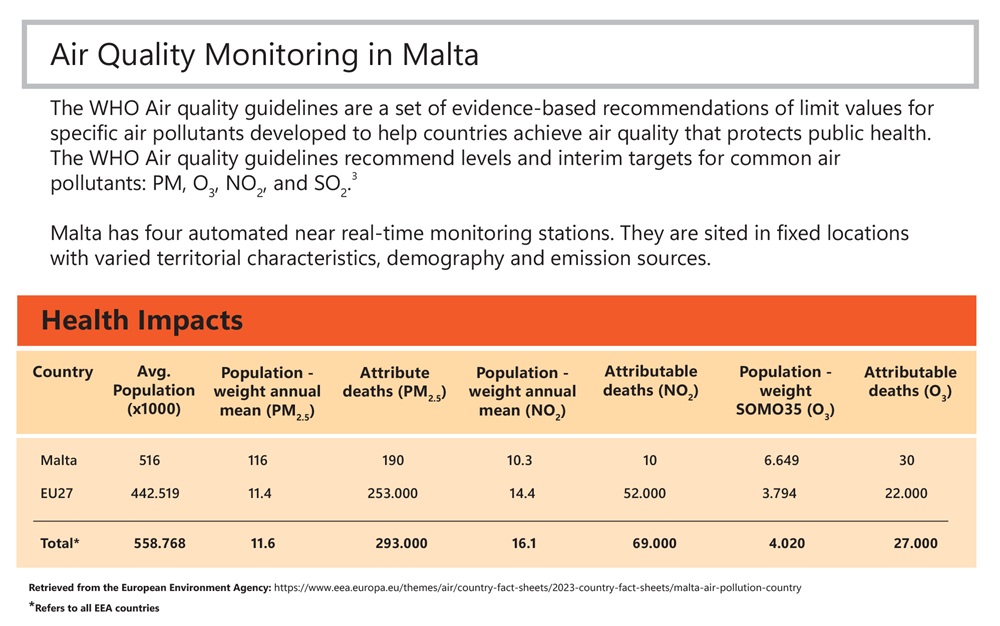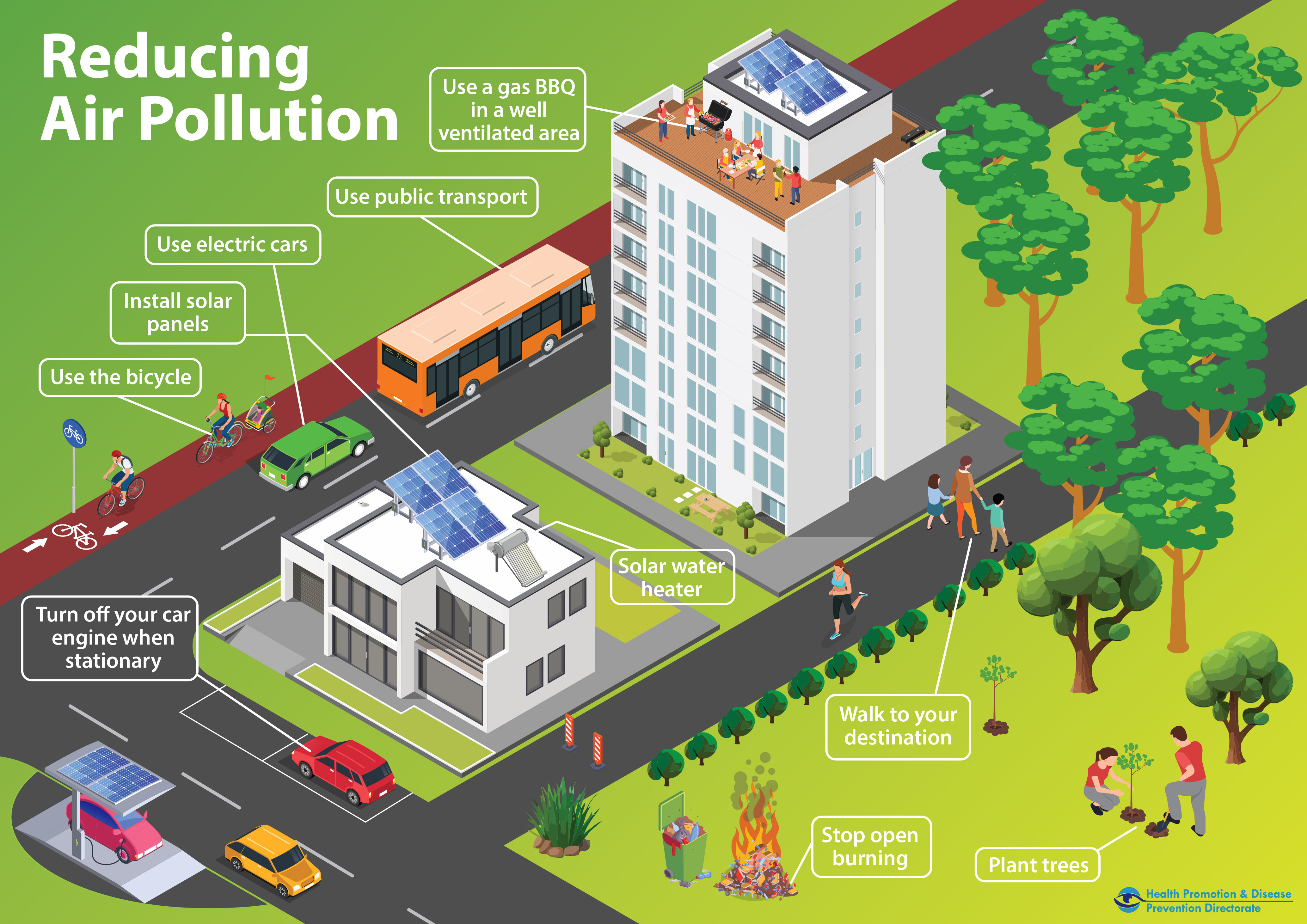What is Air Pollution?
After tobacco, air pollution is the second highest risk factor for noncommunicable disease. It is defined as the contamination of outdoor and indoor pollution by any chemical, physical or biological agent that modifies the natural characteristics of the atmosphere.
The combined effects of ambient (outdoor) and household (indoor) air pollution are associated with 6.7 million premature deaths annually worldwide.
Air pollution is an invisible health threat.
What constitutes outdoor air pollution?
Pollutants in outdoor pollution include particulate matter, nitrogen dioxide, sulphur dioxide and other toxins. When mixed with water, oxygen and other chemicals, nitrogen dioxide and sulphur dioxide are responsible for the acid rain which causes harmful effects to the soil and trees.
Airborne particulate matter (PM) is a complex mixture of solids and aerosols composed of small droplets of liquid, dry solid fragments, and solid cores with liquid coatings.
Particles are defined by their diameter for air quality regulatory purposes. Those with a diameter of 10 microns or less are known as (PM 10) and fine particulate matter is defined as particles that are 2.5 microns or less in diameter (PM2.5).
Emissions from combustion of gasoline, oil, diesel fuel or wood produce much of the PM2.5 pollution found in outdoor air, as well as a
significant proportion of PM 10 also includes dust from construction sites, landfills and agriculture, wildfires and brush/waste burning, industrial sources, wind-blown dust from open lands, pollen and fragments of bacteria.
What are the main harmful effects of particulate matter on human health?
The International Agency for Research on Cancer (IARC) concluded that fine particulate matter is one of the main causes of lung cancer. Both PM₂.₅ and PM₁₀ are inhalable into the lungs but PM₂.₅ can even enter the bloodstream, primarily resulting in cardiovascular and respiratory impacts, and also affecting other organs1.
Short-term exposures to PM 10 have been associated primarily with worsening of respiratory diseases, including asthma and chronic obstructive pulmonary disease (COPD). Long-term exposure to PM2.5 has been linked to premature death, particularly in people who have chronic heart or lung diseases, and reduced lung function growth in children.


Download the leaflet here
